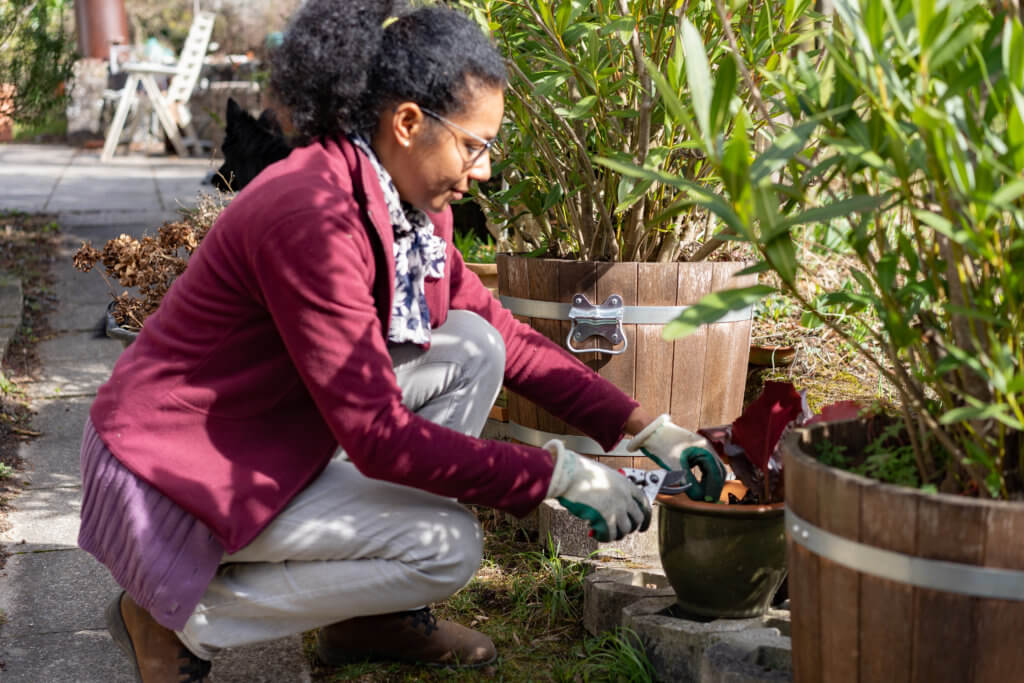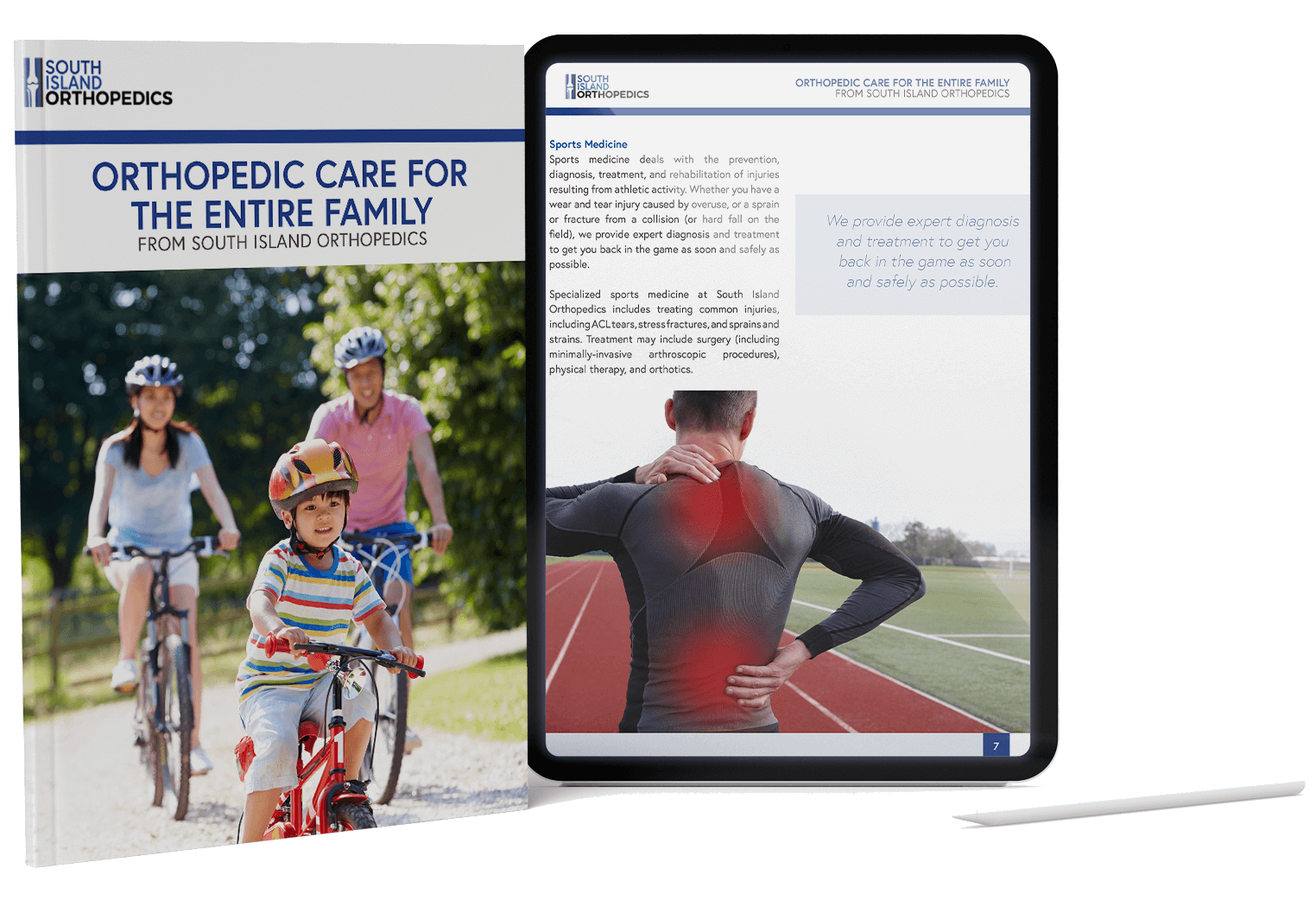April Showers Bring … Arthritis Pain? Managing Weather-Related Joint Pain
“A storm must be coming. I can feel it in my knee.”
How many times have you heard an older relative say something like this — or made a similar statement yourself? While some people might write off the idea of weather affecting arthritis pain or triggering pain from an old injury, there’s actually some evidence that pain could be worsened by the weather.
It might be surprising, too, to learn that it’s not always cold weather that exacerbates pain. More people report increased symptoms during warmer, damp springtime weather. In fact, an analysis of people with rheumatoid arthritis found an increase in RA activity in the spring and a decrease in the fall.
With spring right around the corner, the team at South Island Orthopedics is here to offer some helpful insights into why you might be more sore in the coming months, and how you can alleviate the pain.
How Weather Relates to Arthritis Pain
 Despite plenty of anecdotal evidence that says otherwise, scientists have been unable to find a definitive connection between weather and increased arthritis pain. That said, a 2019 study used cell phone data to track participants’ locations and precise weather conditions and correlate that information with their reported pain levels.
Despite plenty of anecdotal evidence that says otherwise, scientists have been unable to find a definitive connection between weather and increased arthritis pain. That said, a 2019 study used cell phone data to track participants’ locations and precise weather conditions and correlate that information with their reported pain levels.
What the researchers found is that there is a slight connection between pain and the weather, but not in the ways you might expect. While you might assume that the temperature causes pain, it’s actually more influenced by humidity, air pressure, and wind speeds. More specifically, the more humid and windy it is outside, the more likely you are to have a pain event.
Other studies suggest that changes in barometric pressure, or the weight of air pushing against our bodies, is a factor in arthritis pain. High barometric pressure is associated with pleasant and comfortable weather patterns. When storms move in, the pressure drops. Lower pressure allows more space for joint tissue to swell and become inflamed, causing pain.
Taking these findings as a whole, it makes sense that an incoming weather event might aggravate arthritis pain. Experts also note that the phenomenon is limited to those with arthritis and other musculoskeletal conditions. The weather doesn’t seem to affect those with nerve-related pain conditions like neuropathy.
Managing Arthritis Pain in the Spring and Summer
 Some people try to manage their arthritis by moving to a warmer climate. However, researchers have found that even people living in places that have mild weather year-round report weather-related pain, and that those living in colder climates don’t report any more pain than anywhere else.
Some people try to manage their arthritis by moving to a warmer climate. However, researchers have found that even people living in places that have mild weather year-round report weather-related pain, and that those living in colder climates don’t report any more pain than anywhere else.
The good news is that New York’s average temperature increases significantly during the spring, with average daytime highs in the 40s in March warming up to around 70 degrees in May. However, those increasing temperatures bring more humidity and there are more rainy days in the spring than at any other time of year. This can mean some flare-ups, but there are some things you can do to prevent them, or at least reduce your discomfort.
Preventing Weather-Related Pain
If you have arthritis, one of the best things you can do is keep up with the local forecast. The Arthritis Foundation has an easy tool that helps predict the risk of weather-related discomfort for your area, using a 10-point scale.
When a storm or foul weather is in the forecast, make sure to stay limber. Gentle exercises, especially stretching and yoga, can help keep your joints loose and reduce inflammation. Swimming is another good choice for exercise, as it doesn’t strain your joints but still helps you build muscle and maintain your strength.
It’s also important to keep moving. While it might seem counterintuitive, and you may be sore, staying active by walking or stretching can help prevent stiffness and actually ease the pain.
Staying hydrated is also critical to helping reduce weather-related arthritis pain. Drinking plenty of water supports circulation, which can help reduce inflammation. Staying hydrated also helps reduce swelling, which can contribute to discomfort.
Finally, keep yourself cool and comfortable. Especially humid weather can exacerbate the pain, so remaining indoors with air conditioning can help prevent a flare-up. If necessary, taking an over-the-counter pain reliever can help relieve occasional flare-ups. Medication is best used when you have pain brought on by weather or when you experience discomfort after activities your joints aren’t used to, like working in the garden.
Getting Help with Arthritis Pain
 Arthritis is common and we understand the impact that it can have on your life. If the usual relief measures don’t help, our team of orthopedic surgeons can identify other treatment options to reduce pain and restore your range of motion and mobility. These treatments may include:
Arthritis is common and we understand the impact that it can have on your life. If the usual relief measures don’t help, our team of orthopedic surgeons can identify other treatment options to reduce pain and restore your range of motion and mobility. These treatments may include:
- Prescription medication
- Cartilage supplements
- Cortisone injections
- Physical therapy
- Surgery to remove the joint lining, fuse bones, or realign bones
- Joint replacement surgery
At South Island Orthopedics, you can expect the highest-quality care from our team of board-certified orthopedic specialists. They design personalized arthritis treatment plans that cater to individual patient diagnoses and needs, helping you live as pain-free as possible and continue to enjoy doing the things you love.
If the change in seasons has you struggling to manage your symptoms, we encourage you to request an appointment at any one of our convenient Long Island locations.
South Island Orthopedics’ Guide to Bone and Joint Care

